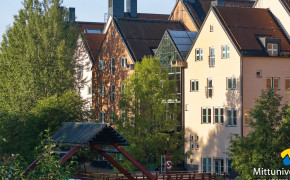New innovative solutions throughout the entire value chain for green energy, from harvest and storage to charge and drive the vehicles of the future.
Major efforts are needed to reach a fossil-free society with zero emissions and a transition to renewable energy. All electricity needs to come from renewable sources and the entire vehicle fleet needs to be electrified.
The DRIVE project is based on the strong growth of renewable energy and the regional companies' opportunities to contribute. The region and Mid Sweden University have a strong position in research and development, primarily for cellulose materials and large-scale processes, but also for green nanomaterials. In DRIVE, we combine green nanomaterials with the large-scale processes of the paper industry to create large functional surfaces for harvest and storage of renewable energy which is brought together with efficient power electronics and new generation electric motors.
The project is interdisciplinary and involves 20 researchers, from chemists and materials physicists to electronics engineers, in five sub-projects together with 25 regional companies, from materials and electronics companies to grid and property owners. The research is focused development of: Triboelectric nanogenerators to harvest wind energy, Lithium-ion batteries and paper-based supercapacitors to store energy, efficient and rapid wide-range converters for charging and safe low-voltage high-power electric motors for electric cars. To support the research, the project also develops the Mid Sweden university's open materials and innovation laboratory through investments in new equipment.
Resources needed
Total project budget: 30,2 MSEK
ERUF: 15,1 MSEK
University (MIUN): 6,5 MSEK
Companies: 4 MSEK
Region Västernorrland: 3,3 MSEK
Municipalities: 1,3 MSEK
The project includes 3,5 MSEK for investments in new characterization equipment
Evidence of success
Demonstra of: *Cellulose-based triboelectric nanogenerator with high power output of 300 W/m2. * Graphene-silicon nanoparticle anode material for lithium-ion batteries with increased capacity of 30%. * Large-scale production and coating of graphene-cellulose electrodes for paper-based supercapacitors with 70% capacity but 90% cost reduction.*Wide-range converter for battery-supercapacitor hybrid systems.
* Concept for safe and efficient 300 kW low-voltage motor with in-conductor cooling
Difficulties encountered
It is a great challenge (and satisfaction) to work with the entire chain from materials research to potential energy solutions in the society of the future. In particular, to translate society's needs and wishes for technical solutions to specifications. on properties, performance and scalability.
Potential for learning or transfer
The project focuses on the region's and companies' real challenges and future obstacles to reach a fossil-free society. The close company collaboration helped us to shift the focus from achieving the highest possible performance to focus on sustainability, cost efficiency and sufficient performance. The project works actively to spread results through articles and conferences but also through workshops with the municipalities to address challenges, conditions and opportunities in their activities linked to green energy.
The project results have, through the broad network of stakeholders, been captured by the industry for further product development and generated new projects. An example of this is the graphene company 2Dfab, which recently created a subsidiary for further development of graphene-silicon materials for batteries. Another example is a project where cellulose-based triboelectric nanogenerators are being tested as a component of active facemasks.
Tags: Electric, Energy, Energy transition, Environment








